June 19th Scots Book of Days
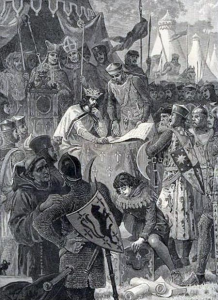 June 19 1215 Magna Carta barons renewed their oaths of fealty to King John of England. John was son of Henry 2nd King of England son of, Geoffrey 5th Count of Anjou husband to Empress Matilda (Maude), daughter of Henry 1st King of England and Matilda of Scots, daughter of Saint Margaret wife of Malcolm III Canmore of Scotland.
June 19 1215 Magna Carta barons renewed their oaths of fealty to King John of England. John was son of Henry 2nd King of England son of, Geoffrey 5th Count of Anjou husband to Empress Matilda (Maude), daughter of Henry 1st King of England and Matilda of Scots, daughter of Saint Margaret wife of Malcolm III Canmore of Scotland.
Barons around the Magna Carta 1215. www.clevelandpeople.com.
Ancestor of Scots Royal lines.
1250 – Malcolm III Rí Alban Scottorum basileus remains were also disinterred, and buried next to Margaret of Wessex (Margaret Aetheling) beside the altar.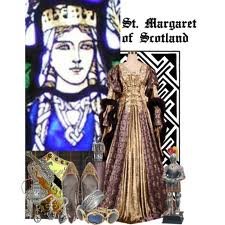 Following the canonization of Malcolm’s wife Margaret of Wessex by Pope Innocent IV. Margaret’s remains were disinterred and placed in a reliquary. Tradition has it that as the reliquary was carried to the high altar of Dunfermline Abbey, past Malcolm’s grave, it became too heavy to move. (ancestor of Scots royal lines) St Margaret of Scotland. www.polyvore.com
Following the canonization of Malcolm’s wife Margaret of Wessex by Pope Innocent IV. Margaret’s remains were disinterred and placed in a reliquary. Tradition has it that as the reliquary was carried to the high altar of Dunfermline Abbey, past Malcolm’s grave, it became too heavy to move. (ancestor of Scots royal lines) St Margaret of Scotland. www.polyvore.com
1294 Charles IV known as the Fair (18/19 June 1294 – 1 February 1328), was the King of France and of Navarre (as Charles I) and Count of Champagne 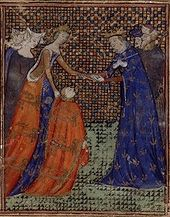 from 1322 to his death: he was the last French king of the senior Capetian lineage. A near-contemporary miniature showing the future Edward III (ancestor of Scots and English royal lines) giving homage to Charles IV under the guidance of Edward’s mother, and Charles’ sister, Isabella, in 1325.
from 1322 to his death: he was the last French king of the senior Capetian lineage. A near-contemporary miniature showing the future Edward III (ancestor of Scots and English royal lines) giving homage to Charles IV under the guidance of Edward’s mother, and Charles’ sister, Isabella, in 1325.
1306 Battle of Methven. Tytler’s Britannica (p 40). Holding Perth (Capital of Scotland) for Edward (King of England, later called 1st) the Earl of Pembroke answered Bruce’s challenge to battle by offering to fight on the 17th. www.197aerial.co.uk/loch_doon_castle.htm 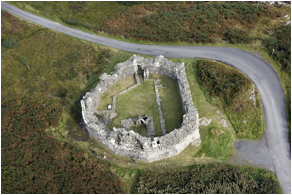 Loch Doon, Ayrshire castle built 1300 by Sir Christopher Seton, brother-in-law of Robert Bruce, King of Scots, and he met a sad end at the hands of the English when the castle was captured some time after the battle of Methven in 1306.
Loch Doon, Ayrshire castle built 1300 by Sir Christopher Seton, brother-in-law of Robert Bruce, King of Scots, and he met a sad end at the hands of the English when the castle was captured some time after the battle of Methven in 1306.
The Scots retired to the wood of Methven, expecting battle the next day. However, Pembroke sallied out from Perth on the evening of the 19th to fall on the (gullible) unawares Scots, who were routed with great slaughter. [Where were the forward scouts, guards, watch or pickets?] The Scots were outnumbered by 1500 men at arms for the English. Robert Bruce King of Scots lost to English Earl of Pembroke.- [TG8-103] First War of Scottish Independence. Sir Simon Fraser, known as “the Patriot”, led troops along with Bruce, and saved the King’s life being thrice unhorsed . Simon was awarded the 3 Crowns which now appear in the Lovat Arms for these three acts of bravery. At the end of the day, Sir Simon was captured by the English and executed with great cruelty by King Edward (later the 1st ) in 1306, in the same barbaric fashion as Wallace.
- Brus or Bruce 1050 2Stewart2Kennedy 2Montgomery2Blair 2Cochrane2Miller 2Simmons2Choate zoe ToaG
Tytler’s Britannica 47. Bruce escaped with 500 men. From Athole Bruce retreated to Aberdeenshire. The queen and ladies joined. Bruce is defeated at Methven – 1306. Whilst campaigning in Perthshire Bruce and his forces are caught in a surprise attack at Methven. With key supporters such as Bishop Lamberton arrested, Bruce is forced to flee. Video: A history of Scotland: Bishop Makes King.
http://www.bbc.co.uk/scotland/history/wars_of_independence/bruce_is_defeated_at_methven/
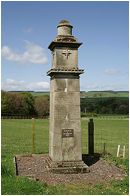 1314 English army marched rapidly to reach Stirling before Mowbray’s agreement expired on 24 June. Edinburgh was reached on 19 June. braveheart.co.uk
1314 English army marched rapidly to reach Stirling before Mowbray’s agreement expired on 24 June. Edinburgh was reached on 19 June. braveheart.co.uk
1517 Sir David Home knits de la bastie’s head by his hair to the mane of his horse, and takes it to Home castle. [TG25-380] with the hair preserved until circa 1827 (3 centuries).
Monument to Antoine d’Arcy, or d’Arcy, known as “De la Bastie” or “Labatie”, the White Knight, close to the site of his murder near Preston, Scottish Borders. Post Flodden disaster, French Ambassador. With a colleague, Master James Ogilvy, de la Bastie represented French interest at a parliament or council at Perth, 26 November 1513, which called for French aid and the return of Albany to be Regent of Scotland. Labatie was made Deputy Governor and Warden of Scottish Marches, and was the keeper of Dunbar Castle.
1566 James I of England (James VI, King of Scots) born in Scotland. (TG31-111)
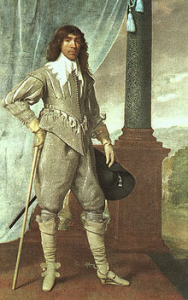 1566 Heir presumptive. James 2nd Lord Hamilton, 1st Earl of Arran (1475–1529), married firstly in 1490 Elizabeth Home by whom he had two daughters; he divorced Elizabeth in 1504. He married secondly in 1516, Janet Bethune, daughter of Sir David Bethune, 1st of Creich and Janet Duddlingston, by whom he had three children including his heir, James Hamilton, Duke of Châtellerault, 2nd Earl of Arran (c.1516- 22 January 1575), heir presumptive to the Kingdom of Scotland (2 July 1536 – 22 May 1540), (April 1541- 8 December 1542), (14 December 1542 – 19 June 1566), (29 July 1567 – 22 January 1575); Regent of Scotland (1542–1554))
1566 Heir presumptive. James 2nd Lord Hamilton, 1st Earl of Arran (1475–1529), married firstly in 1490 Elizabeth Home by whom he had two daughters; he divorced Elizabeth in 1504. He married secondly in 1516, Janet Bethune, daughter of Sir David Bethune, 1st of Creich and Janet Duddlingston, by whom he had three children including his heir, James Hamilton, Duke of Châtellerault, 2nd Earl of Arran (c.1516- 22 January 1575), heir presumptive to the Kingdom of Scotland (2 July 1536 – 22 May 1540), (April 1541- 8 December 1542), (14 December 1542 – 19 June 1566), (29 July 1567 – 22 January 1575); Regent of Scotland (1542–1554))
James Hamilton, 1st Duke of Hamilton by Daniel Mytens, 1629
- [Hamilton 2Stewart 2Millar 2simmons 2Choate 2Sorensen]
1755 Battle of Monongahela River 1755 – Braddock’s Defeat, Fort Duquesne, western Pennsylvania Colony. The French and Indian War also known as the Seven Year War (1757 to 1762). Braddock’s army reached the Little Crossing place. ‘Braddock road’ in Alexandria Virginia follows the route of this army, along the cut of a trail in 1755.
1831 Sabbath. Joseph Smith the Prophet, in Kirtland, Ohio,, (clans Huntley, Hamilton, Mackenzie, Mack of Inverness, Malcolm King O Scots) Doctrine and Covenants 55, Sometime in June. Do the work of printing, and of selecting and writing books for schools in this church, that little children also may receive instruction before me as is pleasing unto me.
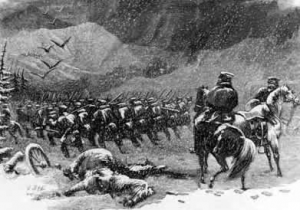 1858 Utah War. US Army on the high plains of Wyoming, near continental divide, at 8000 feet, spring in blizzard. Ilovehistory.utah.gov
1858 Utah War. US Army on the high plains of Wyoming, near continental divide, at 8000 feet, spring in blizzard. Ilovehistory.utah.gov
1858 Utah War. This date, a newly arrived reporter for the New York Herald wrote, “Thus was peace made – thus was ended the ‘Mormon war’, which…may be thus historisized: – Killed, none; wounded, none; fooled, everybody.” U.S. President James Buchanan Jr. lent his name as ‘Buchanan’s Blunder.’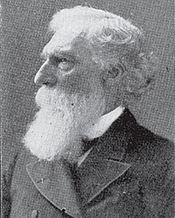 Saint Daniel Wells, Lieutenant General instructed Saint Joseph Taylor, Major, recorded as follows.
Saint Daniel Wells, Lieutenant General instructed Saint Joseph Taylor, Major, recorded as follows.
‘On ascertaining the locality or route of the troops, proceed at once to annoy them in every possible way. Use every exertion to stampede their animals and set fire to their trains. Burn the whole country before them and on their flanks. Keep them from sleeping, by night surprises; blockade the road by felling trees or destroying the river fords where ye can. Watch for opportunities to set fire to the grass on their windward, so as, if possible, to envelop their trains. Leave no grass before them that can be burned. Keep your men concealed as much as possible, and guard against surprise.’ 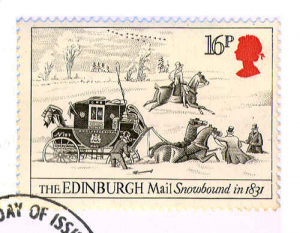 Wikipedia. Saints’ strategy was the same as Scottish defense from invaders, hinder and weaken and annoy, and withdraw to the mountains, and let the winter snows do the rest. A strategy which worked for several thousand years, from about 500 B.C. to 1560.
Wikipedia. Saints’ strategy was the same as Scottish defense from invaders, hinder and weaken and annoy, and withdraw to the mountains, and let the winter snows do the rest. A strategy which worked for several thousand years, from about 500 B.C. to 1560.
1877 Charles Coburn, (June 19, 1877 – August 30, 1961), actor, Scots ancestry. Coburn won an Academy Award for Best Supporting Actor for his role as a retired millionaire playing Cupid in The More the Merrier in 1943.
1937 Sir James Matthew Barrie, 1st Baronet, OM (9 May 1860 – died 19 June 1937) was a Scottish author and dramatist, best remembered today as the creator of Peter Pan Peter Pan, or The Boy Who Wouldn’t Grow Up, a “fairy play” about this ageless boy and an ordinary girl named Wendy who have adventures in the fantasy setting of Neverland. disneystore
 His father David Barrie was a modestly successful weaver. His mother was Margaret Ogilvy. In 1901 and 1902 he had back-to-back successes: Quality Street, about a responsible ‘old maid’ who poses as her own flirtatious niece to win the attention of a former suitor returned from the war; and The Admirable Crichton, a critically acclaimed social commentary with elaborate staging, about an aristocratic household shipwrecked on a desert island, in which the butler naturally rises to leadership over his lord and ladies for the duration of their time away from civilization.
His father David Barrie was a modestly successful weaver. His mother was Margaret Ogilvy. In 1901 and 1902 he had back-to-back successes: Quality Street, about a responsible ‘old maid’ who poses as her own flirtatious niece to win the attention of a former suitor returned from the war; and The Admirable Crichton, a critically acclaimed social commentary with elaborate staging, about an aristocratic household shipwrecked on a desert island, in which the butler naturally rises to leadership over his lord and ladies for the duration of their time away from civilization.
Crichton. Crest: A dragon spouting out fire Proper Motto: GOD SEND GRACE Chief: David Maitland Makgill Crichton of that Ilk Seat: Monzie Castle, Crieff
- Crichton of Brunstone 1100 2Gordon2Kennedy 2Stewart2Miller 2Simmons2Choate
 Makgill Crest: A phoenix in flames Proper. Motto: SINE FINE.
[“Without end”]. Chief: Ian Arthur Alexander Makgill, 14th Viscount of Oxfuird.
Makgill Crest: A phoenix in flames Proper. Motto: SINE FINE.
[“Without end”]. Chief: Ian Arthur Alexander Makgill, 14th Viscount of Oxfuird.
1940 Battle of Britain. Fighter Command had only 520 aircraft ready for operations. At the outbreak of war (September 1939), both the Luftwaffe and the RAF used 87 octane aviation fuel. In March 1940, the RAF converted to 100 octane fuel, obtained from the United States. This gave a 30 percent boost in performance to the Rolls Royce Merlin engines in the Spitfires and Hurricanes. The Luftwaffe continued to use 87 octane. Dowding organized the Fighter Command defense into four groups. The largest, covering southeastern England and the approaches to London, was 11 Group, The 4th group was Northern England and Scotland. The Spitfires and Hurricanes used Browning machine guns, designed in Utah.
1944 On June 19, 1944, the mobile Japanese task force attacked the U.S. ships between the Philippines and the Marianas. The result was the Battle of the Philippine Sea, the biggest carrier engagement of the war. U.S. submarines sank two Japanese carriers, torpedo aircraft accounted for another carrier, and U.S. planes destroyed more than 350 Japanese aircraft. American sailors and pilots with Scots ancestry.
Disclaimer: The author of each article published on this web site owns his or her own words. The opinions, beliefs and viewpoints expressed by the various authors and forum participants on this site do not necessarily reflect the opinions, beliefs and viewpoints of Utah Standard News or official policies of the USN and may actually reflect positions that USN actively opposes. No claim in public domain or fair use. © John Choate
Utah Standard News depends on the support of readers like you.
Good Journalism requires time, expertise, passion and money. We know you appreciate the coverage here. Please help us to continue as an alternative news website by becoming a subscriber or making a donation. To learn more about our subscription options or make a donation, click here.
To Advertise on UtahStandardNews.com, please contact us at: ed@utahstandardnews.com.


Comments - No Responses to “June 19th Scots Book of Days”
Sure is empty down here...